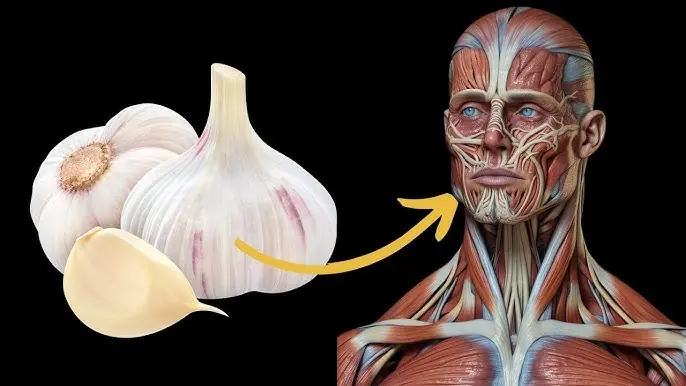
To Know If Your Internal Organs Are Infected, Just Look at Your Feet. If There Are 3 Signs, You Need to Go to the Emergency Room
The human body is a complex and interconnected system. One of the most fascinating aspects of this system is how various parts of the body communicate with each other. Often, the symptoms of internal organ issues may not always be immediately noticeable in the areas where the problem is occurring. However, certain signs may manifest in other parts of the body, even in the feet. Surprisingly, your feet can serve as a critical indicator of internal health. There are three significant signs to look for in your feet that could indicate serious issues with your internal organs. If you notice any of these symptoms, it may be time to visit the emergency room.

1. Swollen Feet and Ankles
One of the most common signs that something is wrong with your internal organs is swelling in your feet or ankles. If your kidneys, heart, or liver are not functioning properly, fluid can accumulate in your lower extremities. This is because these organs play a key role in maintaining fluid balance and circulation. For example, when the kidneys are not working efficiently, they may not be able to remove enough excess fluid from the body. Similarly, heart failure can lead to poor circulation, causing fluid to build up in the feet and ankles. If you notice persistent swelling that doesn’t go away or gets worse over time, it’s essential to seek medical attention immediately.
2. Discoloration or Change in Skin Color
Another important sign that can be seen on your feet is a change in skin color or texture. A blue or purple tint, especially around the toenails or soles, can indicate poor circulation, which may be related to heart or lung issues. This condition is called cyanosis, and it occurs when there is not enough oxygenated blood flowing through your body. Similarly, yellowing of the skin or nails, known as jaundice, can be a sign of liver problems, such as hepatitis or cirrhosis. If you notice that the color of your feet or nails is not normal, it’s crucial to get checked by a doctor right away.
3. Persistent Pain or Tingling Sensations
Pain or tingling in the feet, particularly if it is persistent, can be a sign of nerve damage or poor blood circulation. This could be linked to diabetes, which affects nerve function and blood flow, or it could point to cardiovascular problems, where circulation is compromised. Peripheral neuropathy, often seen in diabetic patients, can cause sensations such as numbness, tingling, or even a burning feeling in the feet. If you experience these symptoms, it’s important to get a thorough evaluation to ensure that there isn’t an underlying issue with your internal organs that needs urgent medical care.
Conclusion
Our feet are often the last place we think to look when it comes to our internal health. However, they can be a valuable indicator of potential problems with our organs, including the heart, kidneys, liver, and nervous system. Swelling, changes in color, and persistent pain or tingling sensations are all signs that should not be ignored. If you experience any of these symptoms, it is essential to seek medical attention immediately. Timely intervention can make a significant difference in the outcome of your health condition, so it’s better to be cautious and go to the emergency room when necessary. Your feet may hold the key to preventing more serious health issues in the future.
News in the same category


10 Cancer Warning Signs Women Often Overlook

Getting up to pee often in the night could be a symptom linked to heart failure, research says

Things That No One Ever Tells You About Being A Functional Alcoholic

Natural Remedies for Sore Throat and Infections: Detailed Recipes, Tips, and More

Natural Remedies for Snoring: How Leaves Can Help You Sleep Better

The Incredible Health Benefits of Bitter Melon Leaves

Unlock the Secret Power of Guava Leaves: Transform Your Hair, Skin, and Health Naturally

A Single Tomato Has Over 12,000 More Genes Than a Human

Growing Organs from Your Own Cells

RESEARCHERS FIND CANCER UNDO BUTTON, TURNING TUMOR CELLS BACK INTO NORMAL CELLS

WHEN YOU DON'T SLEEP WELL, YOUR BRAIN LITERALLY BEGINS EATING ITSELF

Neurologist Reveals The Single Scariest Thing People Are Doing To Their Brains

15 Incredible Benefits of Castor Leaves for Men and Women Over 30

Whiten Teeth With Carrot Ends Brings Surprising Benefits You’ll Love

Rosemary contains a compound that can help fight Alzheimer's disease

Raw Garlic Before Bed? Here’s What It Does to Your Body!

8 Detrimental Effects Soda Can Have On Your Body

20 Early Warning Signs of Cancer You Should Never Ignore
News Post

One year ago: Discovering the Hidden Potential of Basil Flowers – Everything You Can Do With Them.

How dare you even touch the patient

My mother-in-law, who works with me, humiliated me in front of the entire office

The experienced doctor was only hired as a nurse after prison

If the future mother-in-law had known that the groom was from a wealthy family

She hadn’t even managed to say “I do!” at the registry office

Her mother-in-law opened the box, peered inside, and blushed

Quiet Ksyusha told all her husband’s relatives off with a few choice words

After the betrayal by his wife and his so-called friends

So, according to you, is it normal to rummage through a purse

Mom, you’re just a pauper!» Pashka shouted, slamming the door of his room.

Blind herbalist from a remote village lost her gift of speech

The terminally ill son of wealthy parents married a naive girl, and she took him

10 Cancer Warning Signs Women Often Overlook

Vera couldn’t take her eyes off the sign that read “Operating Room.”

Getting up to pee often in the night could be a symptom linked to heart failure, research says

Having arrived to visit her sister 30 minutes early, Vera dashed into the house and froze at what she saw.

Things That No One Ever Tells You About Being A Functional Alcoholic
